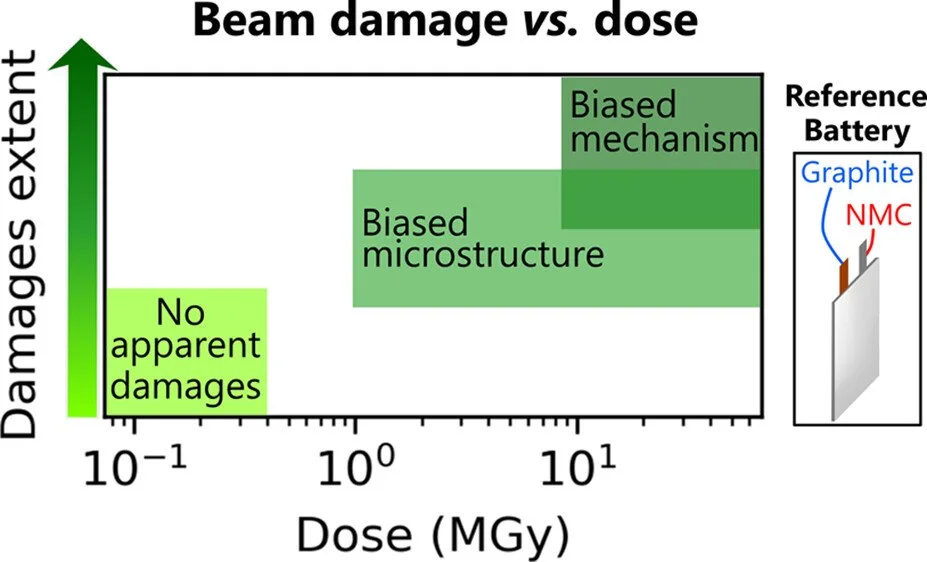Beam
damage
The emergence of high-brilliance synchrotron sources has brought renewed attention to the issue of beam-induced effects on samples. This concern is particularly relevant for operando battery studies, where high photon fluxes are often employed to investigate increasingly subtle phenomena.
ACS Energy Lett. 2023, 8, 3323−3329
T. Jousseaume, S. Tardif and coll. (ACS Energy Lett. 2023, 8, 3323−3329) investigated the effect of dose and dose rate on phase transitions in crystalline battery materials by operando XRD, and found that there is a critical dose and dose rate for insuring safe representative measurements. They developed a simple-to-use python tool to calculate the doses, that is publicly available and downloadable from their github repository (https://github.com/STardif/dose_estimation). Based on the beam, sample, and measurement characteristics, the tool calculates the expected absorbed dose and dose rate of the different sample components, which can be used prior to the experiment to better plan the total exposure times of the experiment. As an open source tool, it is available to the broad battery community and also easily adjustable to fit your needs.

